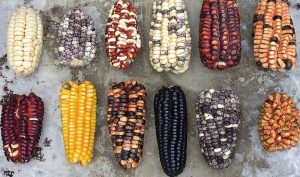Prior to this week, agroecology was not part of my vocabulary. What really stuck out to me was the example given in the keywords post, talking about Brazil and its production of soybeans. While a crop like this can boost the national economy, monocropping can lead to decreased soil nutrients, a decline in biodiversity, overuse of fertilizers, and other significant issues. Some popular examples of this are corn and wheat, which are some of the widely grown industrial crops in the United States. From my understanding, Indigenous Agroecology combats issues like this through the utilization of natural resources, the implementation of Indigenous practices, and the utilization of plants available in the immediate region.
Discussing this made me recall something I’d learned from watching an episode of Chef’s Table a while back. The episode was about a chef named Virgilio Martínez and his restaurant called Central, in Peru. He enjoys focusing on and preserving native plants and ingredients as well as indigenous cooking techniques. He was particularly interested in Peruvian corn, and I was shocked when he showed all of the different varieties. I grew up in the United States, and I was only ever exposed to yellow, or maybe the occasional white corn. He explained that the beautiful range of the shapes, sizes, and colors of the Peruvian corn was a result of the preservation of biodiversity and indigenous cultivation methods.

Hi Grace, I liked the connections you made in the reflection, in particular the one about the Chef’s Table episode about Peru. When I was young, I lived in Peru for around 6 years and was able to have the first-hand experience with Peruvian food. I remember not only seeing a variety of corn, but also the variety of potatoes! Fun fact there are around 3,800 different types of potatoes in Peru!
Hey Estefania, thanks for sharing, that’s so interesting! I’d love to be able to visit Peru in the future 🙂